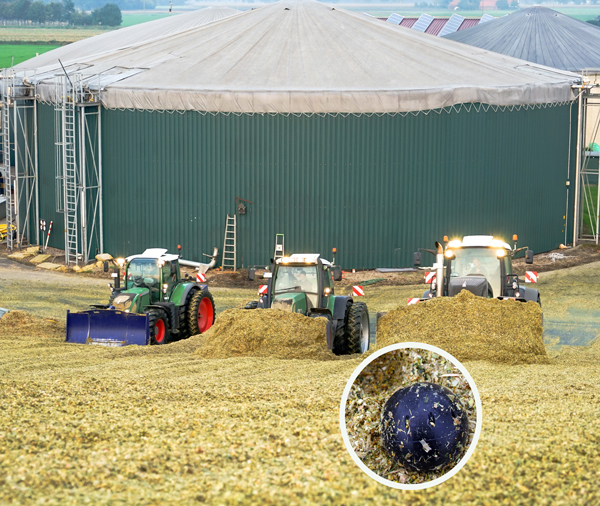Autonomous sensor nodes for agriculture and the energy industry
Poor silage not only endangers livestock: it can harm other uses, like the production of green energy. The better the ensilage process, the more efficiently biogas can be produced. Progress in the area has long been stifled by the absence of suitable sensor technology to monitor the entire process from filling the silos to extracting the finished silage. The multi-sensor technology developed by Fraunhofer IZM with partners from academia (Julius Kühn Institute (JKI), Brunswick) and industry (Esys GmbH, Berlin) makes it possible for the first time to track critical parameters like the density of the silage. Any flaws in the ensilage process or in the finished product are pinpointed and can be remedied in good time before affecting the quality of the silage. By using software standards common in harvest management applications, the sensor data can be integrated with established agricultural software and implemented immediately in everyday farm operations.
Working with the partners at JKI and Esys, several pretests were conducted to find suitable sensor for measuring pH values, temperature, and density. An energyefficient signal processing system was developed, and a suitable body for the sensor node was designed. It communicates by wireless connection (169 MHz) with an internet bridge that forwards the data to the database on a webserver via the mobile network. An Android app for mobile use, e.g. for drivers, maps the data to the nodes on the ground. The JKI developed and stocked a trial silo to calibrate the sensor system.
One particular challenge lay in the development of the density sensor. Since the sensor nodes are meant to track density during the ensilage process itself, traditional approaches like weighing a defi ned amount of material were not an option. The measuring technology also had to be miniaturized. With this in mind, the measurement relies on subGHz resonators, using a 2.4 GHz frequency to keep costs down by allowing the use of readily available standard transceiver chips. The resonator was initially simulated, before samples were produced by rapid prototyping and put to the test under realworld conditions. The pH sensors also use standard technology, adjusted to match the device’s design. After a first run of successful sensor tests, this year will see the technology put to the test in a real silage cycle. Equipment manufacturers, developers and electronic packaging specialists who are interested in the topics silicon interposers, TSVs, liquid cooling, power delivery, buck-converters, silicon photonics, high-Q inductors, passive coupling.
 Fraunhofer Institute for Reliability and Microintegration IZM
Fraunhofer Institute for Reliability and Microintegration IZM